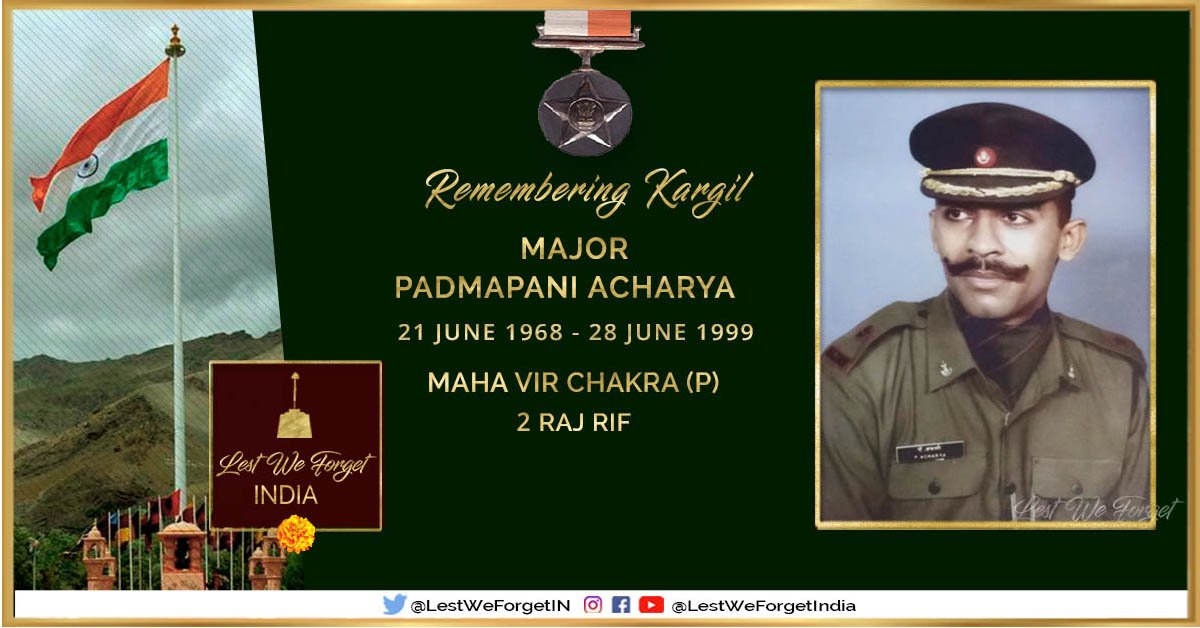
#RememberingKargil
Barefoot, he scaled a rock wall at 16,000ft in a daring mission
#LestWeForgetIndia🇮🇳 Capt Neikezhakuo Kenguruse, #MahaVirChakra (P) 2 RAJ RIF & his supreme sacrifice #OnThisDay 28 June 1999 at #Tololing
The gallant #IndianBrave was only 25 yrs old. #OpVijay
Barefoot, he scaled a rock wall at 16,000ft in a daring mission
#LestWeForgetIndia🇮🇳 Capt Neikezhakuo Kenguruse, #MahaVirChakra (P) 2 RAJ RIF & his supreme sacrifice #OnThisDay 28 June 1999 at #Tololing
The gallant #IndianBrave was only 25 yrs old. #OpVijay

In 1999, as the #Kargil conflict started, Capt Kenguruse was a junior commander with 2nd Battalion The #RajputanaRifles. For his determination and prowess, he was made the lead commander of the #GhatakPlatoon of his unit.
On 28 June night, Capt. Kenguruse’s platoon was given the responsibility of taking out a strategic machine gun post held by the enemy on a cliff face, the Black Rock. Heavy gun fire from this position had been hindering the battalion’s progress in the sector for days.
As the commando platoon scaled the cliff, they came under intense mortar and automatic fire from above. As a result, the team faced heavy casualties.
Capt Kenguruse was shot in the abdomen.
Capt Kenguruse was shot in the abdomen.
Undeterred by the injury, he urged his men to carry on with the assault. On reaching the final cliff face, the platoon was halted by a sheer vertical rock wall that separated them from the enemy post.
To ensure that his platoon was able to climb this sheer cliff, he secured a rope for his men but his boots kept slipping on the icy slopes.
Bleeding profusely Capt Kenguruse decided to do something incredibly brave.
Bleeding profusely Capt Kenguruse decided to do something incredibly brave.
At a height of 16,000 ft and in the freezing temperature of -10 degrees C, Capt Kenguruse kicked off his boots.
Using his bare feet to get a grip, he climbed up freezing cliff while carrying an RPG rocket launcher with him.
Using his bare feet to get a grip, he climbed up freezing cliff while carrying an RPG rocket launcher with him.
Once on top, Capt Kenguruse fired the rocket launcher at the seven Pakistani bunkers. Despite heavy enemy gunfire, he kept firing till he had decimated the bunkers.
Then he fought two enemy soldiers with his commando knife in hand-to-hand combat.
Then he fought two enemy soldiers with his commando knife in hand-to-hand combat.
He single-handedly neutralised two more enemy soldiers with his rifle before a volley of bullets hit him and he laid down his life fighting.
Capt Kenguruse's daring act of valour ensured that his troops would go on to capture the position.
Capt Kenguruse's daring act of valour ensured that his troops would go on to capture the position.
#LestWeForgetIndia🇮🇳 Captain Neikezhakuo Kenguruse - his extraordinary grit and determination, his valour and his supreme sacrifice.
The #IndianBrave was awarded the #MahaVirChakra posthumously.
#OpVijay
The #IndianBrave was awarded the #MahaVirChakra posthumously.
#OpVijay
• • •
Missing some Tweet in this thread? You can try to
force a refresh









